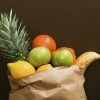 Fruits taste good, and they are good for you. Some fruits are very nutrient dense. This means they contain lots of the vitamins, minerals, antioxidants, and fiber that your body needs to stay healthy. Whether you like fresh fruit or fruit juice, frozen fruit or fruit from a can, it’s important to choose a variety of different fruits every day. Here are some tips to help you before, during, and after your fruit shopping trip. This 3-page fact sheet was written by Ashley R. Kendall and Wendy J. Dahl, and published by the UF Department of Food Science and Human Nutrition, March 2013.
Fruits taste good, and they are good for you. Some fruits are very nutrient dense. This means they contain lots of the vitamins, minerals, antioxidants, and fiber that your body needs to stay healthy. Whether you like fresh fruit or fruit juice, frozen fruit or fruit from a can, it’s important to choose a variety of different fruits every day. Here are some tips to help you before, during, and after your fruit shopping trip. This 3-page fact sheet was written by Ashley R. Kendall and Wendy J. Dahl, and published by the UF Department of Food Science and Human Nutrition, March 2013.
http://edis.ifas.ufl.edu/fs215
Author: dihagan
Insecticides Currently Used on Vegetables (ENY419/IG018)
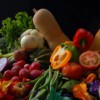 This 12-page fact sheet lists many of the common insecticides currently labeled for use on vegetables in Florida. A number of new materials have been registered in the past few years or have had additional crops added to their labels. Some older organophosphate insecticides are now restricted to just a few crops, a result of recent rulings related to the Food Quality Protection Act. Changes continue, thus this listing may not be totally accurate at the time of printing. Written by S. E. Webb and P. A. Stansly, and published by the UF Department of Entomology and Nematology, August 2012.
This 12-page fact sheet lists many of the common insecticides currently labeled for use on vegetables in Florida. A number of new materials have been registered in the past few years or have had additional crops added to their labels. Some older organophosphate insecticides are now restricted to just a few crops, a result of recent rulings related to the Food Quality Protection Act. Changes continue, thus this listing may not be totally accurate at the time of printing. Written by S. E. Webb and P. A. Stansly, and published by the UF Department of Entomology and Nematology, August 2012.
http://edis.ifas.ufl.edu/ig018
Forced-Use Dust Bags for Management of External Parasites (ENY281/IG135)
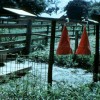 Dust bags are an effective method of horn fly and louse control. However, dust bags are only effective when hung in places where cattle are forced to use them. The best locations are areas where cattle must pass once or twice a day, or every other day, for instance between mineral boxes or water and pasture. During the field tests, forced-use dust bags provided an average of 90% horn fly control. Production was increased by an average of 34% over the normal management practice. This increase in production was equivalent to 1/3 lb/animal/day. This 5-page fact sheet was written by P. E. Kaufman and E. N. I. Weeks, and published by the UF Department of Entomology and Nematology, November 2012.
Dust bags are an effective method of horn fly and louse control. However, dust bags are only effective when hung in places where cattle are forced to use them. The best locations are areas where cattle must pass once or twice a day, or every other day, for instance between mineral boxes or water and pasture. During the field tests, forced-use dust bags provided an average of 90% horn fly control. Production was increased by an average of 34% over the normal management practice. This increase in production was equivalent to 1/3 lb/animal/day. This 5-page fact sheet was written by P. E. Kaufman and E. N. I. Weeks, and published by the UF Department of Entomology and Nematology, November 2012.
http://edis.ifas.ufl.edu/ig135
Natural Area Weeds: Old World Climbing Fern (Lygodium microphyllum) (SSAGR21/AG122)
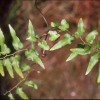 Native to Africa, Asia, and Australia, Old World climbing fern (OWCF) is a newcomer to Florida that has spread at an alarming rate since its introduction. The Florida Exotic Pest Plant Council considers Old World climbing fern to be invasive. It’s also regulated by laws of the Florida Department of Agriculture and Consumer Services (FDACS) as a Florida Noxious Weed and by the United States Department of Agriculture (USDA) as a Federal Noxious Weed. It may be the most serious threat to Florida’s natural areas. This 6-page fact sheet was written by Kenneth A. Langeland and Jeffery Hutchinson, and published by the UF Department of Agronomy, February 2013.
Native to Africa, Asia, and Australia, Old World climbing fern (OWCF) is a newcomer to Florida that has spread at an alarming rate since its introduction. The Florida Exotic Pest Plant Council considers Old World climbing fern to be invasive. It’s also regulated by laws of the Florida Department of Agriculture and Consumer Services (FDACS) as a Florida Noxious Weed and by the United States Department of Agriculture (USDA) as a Federal Noxious Weed. It may be the most serious threat to Florida’s natural areas. This 6-page fact sheet was written by Kenneth A. Langeland and Jeffery Hutchinson, and published by the UF Department of Agronomy, February 2013.
http://edis.ifas.ufl.edu/ag122
Estimacion de costos de establecimiento y produccion de papaya en el sur de la Florida en 2012 (FE920)
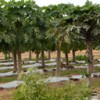 El alza reciente en los precios de la papaya, consecuencia de las restricciones fitosanitarias impuestas a la fruta proveniente de México, ha despertado el interés de productores en el Sur de la Florida, quienes han percibido la oportunidad de suplir la demanda por papaya madura en los Estados Unidos. No obstante, hay mucha incertidumbre con respecto a la viabilidad económica del negocio. El objetivo de este documento es proveer información acerca del retorno económico y los costos de producción de un cultivo de 5 acres de papaya en el Sur de la Florida. Igualmente, se evaluaron precios y rendimientos que permitirían que el negocio fuese rentable en el Sur de Florida. This 7-page fact sheet was written by Edward A. Evans, Fredy H. Ballen, y Jonathan H. Crane, and published by the UF Department of Food and Resource Economics, February 2013.
El alza reciente en los precios de la papaya, consecuencia de las restricciones fitosanitarias impuestas a la fruta proveniente de México, ha despertado el interés de productores en el Sur de la Florida, quienes han percibido la oportunidad de suplir la demanda por papaya madura en los Estados Unidos. No obstante, hay mucha incertidumbre con respecto a la viabilidad económica del negocio. El objetivo de este documento es proveer información acerca del retorno económico y los costos de producción de un cultivo de 5 acres de papaya en el Sur de la Florida. Igualmente, se evaluaron precios y rendimientos que permitirían que el negocio fuese rentable en el Sur de Florida. This 7-page fact sheet was written by Edward A. Evans, Fredy H. Ballen, y Jonathan H. Crane, and published by the UF Department of Food and Resource Economics, February 2013.
http://edis.ifas.ufl.edu/fe920
Florida's Established Arthropod Weed Biological Control Agents and Their Targets (ENY853/IN779)
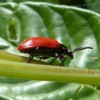 Around 5% of the plant species deliberately introduced into Florida for crop production and horticultural uses have invaded sensitive aquatic and terrestrial natural areas as well as improved pastures. One of the reasons they become invasive is they lack the natural enemies that limit their reproduction. Biological control reunites these natural enemies (usually arthropods) with their host plants to selectively weaken and suppress the invasive weeds. This 3-page fact sheet was written by J. P. Cuda and J. H. Frank, and published by the UF Department of Entomology and Nematology, October 2013.
Around 5% of the plant species deliberately introduced into Florida for crop production and horticultural uses have invaded sensitive aquatic and terrestrial natural areas as well as improved pastures. One of the reasons they become invasive is they lack the natural enemies that limit their reproduction. Biological control reunites these natural enemies (usually arthropods) with their host plants to selectively weaken and suppress the invasive weeds. This 3-page fact sheet was written by J. P. Cuda and J. H. Frank, and published by the UF Department of Entomology and Nematology, October 2013.
http://edis.ifas.ufl.edu/in779
Regulatory and Market Risk Factors and the Emissions Reduction Potential for Energy Intensive Firms (FE919)
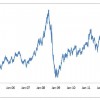 In the last decade, one of the major global environmental concerns has been greenhouse gas emissions. As part of the political debate over climate change, various policy initiatives are being proposed. Energy intensive firms that emit large amounts of greenhouse gases (e.g., floriculture or nursery firms with heated greenhouses) will be operating in an environment of high regulatory and market uncertainties in the coming years. This 3-page fact sheet presents a brief introduction of the regulatory and market risks faced by energy intensive firms and a case study of emissions reduction potential in the horticulture industry. Written by Zhengfei Guan, and published by the UF Department of Food and Resource Economics, March 2013.
In the last decade, one of the major global environmental concerns has been greenhouse gas emissions. As part of the political debate over climate change, various policy initiatives are being proposed. Energy intensive firms that emit large amounts of greenhouse gases (e.g., floriculture or nursery firms with heated greenhouses) will be operating in an environment of high regulatory and market uncertainties in the coming years. This 3-page fact sheet presents a brief introduction of the regulatory and market risks faced by energy intensive firms and a case study of emissions reduction potential in the horticulture industry. Written by Zhengfei Guan, and published by the UF Department of Food and Resource Economics, March 2013.
http://edis.ifas.ufl.edu/fe919
Women and Money: Unique Issues: Money Issues across the Life Cycle (FCS7248/FY1352)
 Most families depend on a woman’s income to help support the household. Some women are co-breadwinners while others are the only source of income. Throughout a woman’s life, she will experience many money issues unique to women. A woman may experience the following situations: lower earnings, a longer life expectancy, lack of retirement planning, divorce, and fewer years in the workplace because of childrearing or caring for older parents. Many of these issues can work against a woman’s ability to accumulate money and attain stable financial status. This 3-page fact sheet was written by Diann Douglas, Martie Gillen, and Lynda Spence, and published by the UF Department of Family Youth and Community Sciences, March 2013.
Most families depend on a woman’s income to help support the household. Some women are co-breadwinners while others are the only source of income. Throughout a woman’s life, she will experience many money issues unique to women. A woman may experience the following situations: lower earnings, a longer life expectancy, lack of retirement planning, divorce, and fewer years in the workplace because of childrearing or caring for older parents. Many of these issues can work against a woman’s ability to accumulate money and attain stable financial status. This 3-page fact sheet was written by Diann Douglas, Martie Gillen, and Lynda Spence, and published by the UF Department of Family Youth and Community Sciences, March 2013.
http://edis.ifas.ufl.edu/fy1352
Retirement Need Analysis: How Much of My Current Income Will I Need for Retirement? (FCS7251/FY1355)
 The amount of money needed for retirement varies from person to person. There may not be an exact amount, but there are ways to estimate the amount you will need. While no “magic number” exists for the amount you should save for retirement, there are calculations you can use to estimate the amount you will need. Calculating your wage replacement ratio (WRR) using either the top-down or bottom-up approach can help you determine how much money you should put aside for retirement and provide you with savings goals. This 3-page fact sheet was written by Jorge Ruiz-Menjivar and Martie Gillen, and published by the UF Department of Family Youth and Community Sciences, March 2013.
The amount of money needed for retirement varies from person to person. There may not be an exact amount, but there are ways to estimate the amount you will need. While no “magic number” exists for the amount you should save for retirement, there are calculations you can use to estimate the amount you will need. Calculating your wage replacement ratio (WRR) using either the top-down or bottom-up approach can help you determine how much money you should put aside for retirement and provide you with savings goals. This 3-page fact sheet was written by Jorge Ruiz-Menjivar and Martie Gillen, and published by the UF Department of Family Youth and Community Sciences, March 2013.
http://edis.ifas.ufl.edu/fy1355
Wildland-Urban Interface: Key Issues (FOR202/FR264)
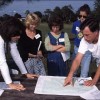 A result of the influx of new residents to the South is an expansion of urban areas into forests and other natural areas, creating areas referred to as the wildland-urban interface. Interface issues of most concern vary from state to state, but some key issues are consistent across the South. the US Forest Service conducted a series of focus groups in 2000. Key issues gleaned from those focus groups and other related sources are described in this 5-page fact sheet written by L. Annie Hermansen-Baez, Jennifer Seitz, and Martha C. Monroe, and published by the UF Department of School of Forest Resources and Conservation, February 2013.
A result of the influx of new residents to the South is an expansion of urban areas into forests and other natural areas, creating areas referred to as the wildland-urban interface. Interface issues of most concern vary from state to state, but some key issues are consistent across the South. the US Forest Service conducted a series of focus groups in 2000. Key issues gleaned from those focus groups and other related sources are described in this 5-page fact sheet written by L. Annie Hermansen-Baez, Jennifer Seitz, and Martha C. Monroe, and published by the UF Department of School of Forest Resources and Conservation, February 2013.
http://edis.ifas.ufl.edu/fr264
A Spatial Analysis of Cultural Ecosystem Service Valuation by Regional Stakeholders in Florida: A Coastal Application of the Social Values for Ecosystem Service (SolVES) Tool (SG129)
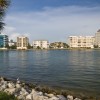 How can we measure how Sarasota Bay residents value their area’s cultural ecosystem services? This 4-page fact sheet describes a project to use a geographic information system application, SolVES 2.0, to assess, map and quantify environmental benefits to people to assist in coastal development decisionmaking. Written by Alisa Cofin, Robert Swett, and Zachary Cole, and published by the UF Department of Sea Grant, November 2012.
How can we measure how Sarasota Bay residents value their area’s cultural ecosystem services? This 4-page fact sheet describes a project to use a geographic information system application, SolVES 2.0, to assess, map and quantify environmental benefits to people to assist in coastal development decisionmaking. Written by Alisa Cofin, Robert Swett, and Zachary Cole, and published by the UF Department of Sea Grant, November 2012.
http://edis.ifas.ufl.edu/sg129
A Multi-Disciplinary Review of Current Sea-Level Change Research in Florida (TP193/SG125)
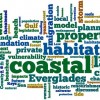 Sea-level rise is an issue of paramount importance for the state of Florida due to its lengthy coastline, low relief, high coastal population density, ecologically and economically vital beaches, estuaries, and wetlands, and porous limestone geology. The rate of sea-level rise in Florida generally follows the global average (~3 mm per year) and is slowly gaining public attention as a significant threat to the natural and socioeconomic future of the state. This 18-page multi-disciplinary review provides an annotated bibliographic summary of current peer-reviewed literature regarding sea-level rise in Florida. Written by Anna Cathey Linhoss, Lisa Gardner Chambers, Kevin Wozniak, and Tom Ankersen, and published by the UF Department of Sea Grant, February 2013.
Sea-level rise is an issue of paramount importance for the state of Florida due to its lengthy coastline, low relief, high coastal population density, ecologically and economically vital beaches, estuaries, and wetlands, and porous limestone geology. The rate of sea-level rise in Florida generally follows the global average (~3 mm per year) and is slowly gaining public attention as a significant threat to the natural and socioeconomic future of the state. This 18-page multi-disciplinary review provides an annotated bibliographic summary of current peer-reviewed literature regarding sea-level rise in Florida. Written by Anna Cathey Linhoss, Lisa Gardner Chambers, Kevin Wozniak, and Tom Ankersen, and published by the UF Department of Sea Grant, February 2013.
http://edis.ifas.ufl.edu/sg125
Grass Carp: A Fish for Biological Management of Hydrilla and Other Aquatic Weeds in Florida (BUL867/FA043)
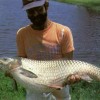 Abundant growth of aquatic plants causes serious problems in ponds, lakes, rivers, and irrigation and drainage throughout Florida. In some situations, native aquatic plants become weeds, but most often exotic plants introduced from areas outside the state flourish under the favorable growing conditions found in Florida. Long-term economical solutions to Florida’s aquatic weed problems have been elusive and there is a need for control techniques to alleviate aquatic weed problems. This 6-page fact sheet provides information on a biological method, the grass carp, for management of some of Florida’s aquatic weed problems. Written by David L. Sutton and Vernon V. Vandiver, Jr., and published by the UF Department of Fisheries and Aquatic Sciences, November 2013.
Abundant growth of aquatic plants causes serious problems in ponds, lakes, rivers, and irrigation and drainage throughout Florida. In some situations, native aquatic plants become weeds, but most often exotic plants introduced from areas outside the state flourish under the favorable growing conditions found in Florida. Long-term economical solutions to Florida’s aquatic weed problems have been elusive and there is a need for control techniques to alleviate aquatic weed problems. This 6-page fact sheet provides information on a biological method, the grass carp, for management of some of Florida’s aquatic weed problems. Written by David L. Sutton and Vernon V. Vandiver, Jr., and published by the UF Department of Fisheries and Aquatic Sciences, November 2013.
http://edis.ifas.ufl.edu/fa043
Mutual Funds (FCS5266/FY1351)
 Mutual funds are open-end investment companies that use a pool of many investors’ money to buy shares of different investments. They can be an effective way for the average investor to build a diverse portfolio. Although these funds come with fees, taxes, and, in the case of load funds, commissions, an investor still has the potential to achieve positive returns and beat inflation. This 4-page fact sheet was written by Lisa Leslie and Michael S. Gutter, and published by the UF Department of Family Youth and Community Sciences, February 2013.
Mutual funds are open-end investment companies that use a pool of many investors’ money to buy shares of different investments. They can be an effective way for the average investor to build a diverse portfolio. Although these funds come with fees, taxes, and, in the case of load funds, commissions, an investor still has the potential to achieve positive returns and beat inflation. This 4-page fact sheet was written by Lisa Leslie and Michael S. Gutter, and published by the UF Department of Family Youth and Community Sciences, February 2013.
http://edis.ifas.ufl.edu/fy1351
Lernaea (Anchorworm) Infestations in Fish (FA185)
 Lernaea species, commonly known as “anchorworms,” are crustacean, copepod parasites that can infect and cause disease and mortality in many types of freshwater fishes, especially wild-caught and pond-raised species. Infestations with Lernaea are most prevalent in the summer months and occur more commonly in stagnant or slow-moving water bodies. This 4-page fact sheet was written by Natalie Steckler and Roy P. E. Yanong, and published by the UF Department of Fisheries and Aquatic Sciences, December 2012.
Lernaea species, commonly known as “anchorworms,” are crustacean, copepod parasites that can infect and cause disease and mortality in many types of freshwater fishes, especially wild-caught and pond-raised species. Infestations with Lernaea are most prevalent in the summer months and occur more commonly in stagnant or slow-moving water bodies. This 4-page fact sheet was written by Natalie Steckler and Roy P. E. Yanong, and published by the UF Department of Fisheries and Aquatic Sciences, December 2012.
http://edis.ifas.ufl.edu/fa185
Argulus (Fish Louse) Infections in Fish (FA184)
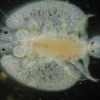 Argulus species (Family: Argulidae), more commonly known as fish lice, are members of a large group of branchiuran parasites that infest and cause disease in fish. The argulids are crustaceans and are related to crabs, lobsters, and shrimp. This 5-page fact sheet was written by Natalie Steckler and Roy P. E. Yanong, and published by the UF Department of Fisheries and Aquatic Sciences, November 2013.
Argulus species (Family: Argulidae), more commonly known as fish lice, are members of a large group of branchiuran parasites that infest and cause disease in fish. The argulids are crustaceans and are related to crabs, lobsters, and shrimp. This 5-page fact sheet was written by Natalie Steckler and Roy P. E. Yanong, and published by the UF Department of Fisheries and Aquatic Sciences, November 2013.
http://edis.ifas.ufl.edu/fa184
Florida Dairy Industry Statistics: Economic Measures (AN287)
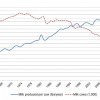 This 7-page fact sheet brings together key economic and price data about Florida’s primary dairy industry collected by the U.S. Department of Agriculture (USDA). Written by K.G. Arriola and A. De Vries, and published by the UF Department of Animal Sciences, February 2013.
This 7-page fact sheet brings together key economic and price data about Florida’s primary dairy industry collected by the U.S. Department of Agriculture (USDA). Written by K.G. Arriola and A. De Vries, and published by the UF Department of Animal Sciences, February 2013.
http://edis.ifas.ufl.edu/an287
Florida Dairy Industry Statistics: Herd Performance Measures and Benchmarks (AN286)
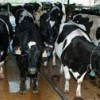 This 8-page fact sheet summarizes technical performance data of dairy herds in Florida and the Southeast United States collected through the Dairy Herd Improvement (DHI) program. Written by K.G. Arriola and A. De Vries, and published by the UF Department of Animal Sciences, February 2013.
This 8-page fact sheet summarizes technical performance data of dairy herds in Florida and the Southeast United States collected through the Dairy Herd Improvement (DHI) program. Written by K.G. Arriola and A. De Vries, and published by the UF Department of Animal Sciences, February 2013.
http://edis.ifas.ufl.edu/an286
Uso Apropiado y Manipulacion de Glifosato en Viveros de Plantas (ENH1209/EP470)
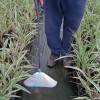 El glifosato es el químico de protección para cultivos más vendido en el mundo y el herbicida mós usado en la industria de viveros de plantas en los Estados Unidos. El glifosato es usado para el control post emergente de malezas. Esta publicación describe el uso adecuado de glifosato para los productores de plantas y sus empleados. This 4-page fact sheet was written by Shawn T. Steed, Robert H. Stamps, and Rodrigo Diaz, and published by the UF Department of Environmental Horticulture, February 2013.
El glifosato es el químico de protección para cultivos más vendido en el mundo y el herbicida mós usado en la industria de viveros de plantas en los Estados Unidos. El glifosato es usado para el control post emergente de malezas. Esta publicación describe el uso adecuado de glifosato para los productores de plantas y sus empleados. This 4-page fact sheet was written by Shawn T. Steed, Robert H. Stamps, and Rodrigo Diaz, and published by the UF Department of Environmental Horticulture, February 2013.
http://edis.ifas.ufl.edu/ep470
MyPlate Foods to Increase: Fruits and Vegetables (FCS80022/FY1348)
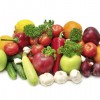 Fruits and vegetables should be a main component of every meal. They are low in calories and provide a number of vitamins that you need in your diet. By making half of your plate fruits and vegetables at every meal, you will reduce your risk for chronic diseases and may even protect yourself against certain types of cancer. This 4-page fact sheet provides information on fruits and vegetables and includes tips on how to add more of them to your diet. Written by Jonathan Holzinger, Karla Shelnutt, and Gail Kauwell, and published by the UF Department of Family Youth and Community Sciences, February 2013.
Fruits and vegetables should be a main component of every meal. They are low in calories and provide a number of vitamins that you need in your diet. By making half of your plate fruits and vegetables at every meal, you will reduce your risk for chronic diseases and may even protect yourself against certain types of cancer. This 4-page fact sheet provides information on fruits and vegetables and includes tips on how to add more of them to your diet. Written by Jonathan Holzinger, Karla Shelnutt, and Gail Kauwell, and published by the UF Department of Family Youth and Community Sciences, February 2013.
http://edis.ifas.ufl.edu/fy1348